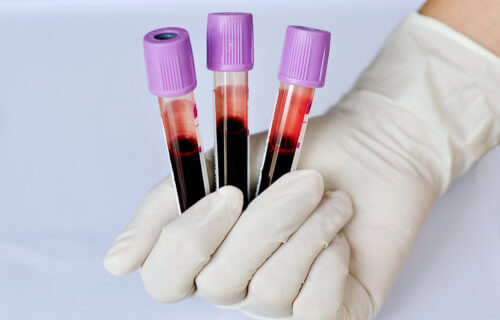MINNEAPOLIS — A rare group of autoimmune and neurological disorders called “stiff person syndrome” could be treatable by replacing plasma in a patient’s blood, according to a new study.
The debilitating illness often causes fluctuating muscle rigidity in the trunk and limbs and a heightened sensitivity to stimuli such as noise, touch, and emotional distress. This can set off muscle spasms in patients. Researchers found that the radical treatment – known as plasmapheresis or therapeutic plasma exchange – eased the symptoms of many patients and allowed them more freedom of movement.
Symptoms of SPS include stiffness and spasms that usually begin in the leg and torso muscles but can also affect the arms and face over time. Most people with these disorders are women and symptoms can come and go during the early stages but eventually become constant. Other people find they are unsteady as they walk and sometimes fall.
“Stiff person syndrome spectrum disorders are rare, and while there are some treatments for varying forms of these disorders, they are not always effective at reducing symptoms or preventing worsening of function,” says study author Dr. Scott Newsome, a neurologist at Johns Hopkins University, in a media release.
“Finding a new way to treat a debilitating and painful disease that has few side effects or risks is a big win. The findings of our research help promote awareness of a treatment that may lead to relief for some people living with stiff person syndrome spectrum disorders.”
Over half of the patients saw an improvement
For the study, the scientists looked at the medical records of 36 people with stiff person syndrome who received plasmapheresis treatments. The process cleans the blood by replacing the plasma with albumin, a product made from donated plasma to treat certain diseases.
Researchers found that this therapeutic plasma exchange was a safe and tolerable form of treatment for people with SPS. Four of the people studied had complications such as catheter infection or bleeding, but there were no deaths or incidents of anaphylaxis.
Additionally, 20 people (56%) saw their health improve using this treatment and 12 people needed fewer medications to treat their symptoms after three months of follow-up. Researchers also reviewed other cases and identified an additional 42 people with stiff person syndrome who had the same treatment. Nearly seven in 10 (69%) reported a temporary improvement in their condition.
“While the main focus of the study was safety, and we showed that complications from this treatment in people with stiff person syndrome are rare and manageable, it’s very important that many people saw improvements or maintained the same level of function,” Dr. Newsome adds.
“Further studies could confirm these results and help inform doctors when to use this treatment for stiff person syndrome spectrum disorders.”
Dr. Newsome is presenting the research at the American Academy of Neurology Summer Conference.
South West News Service writer Danny Halpin contributed to this report.

